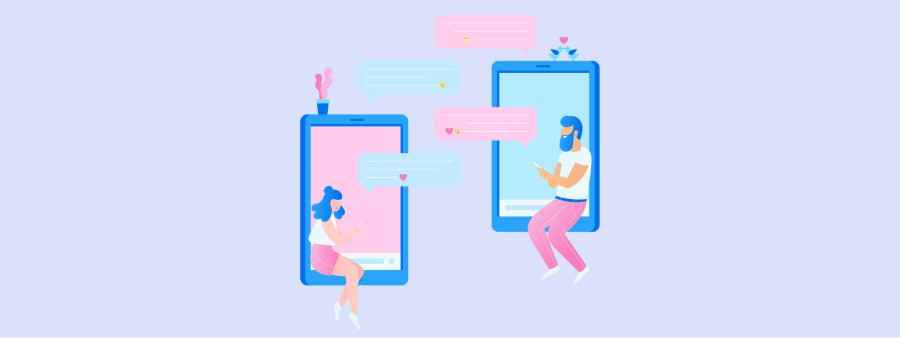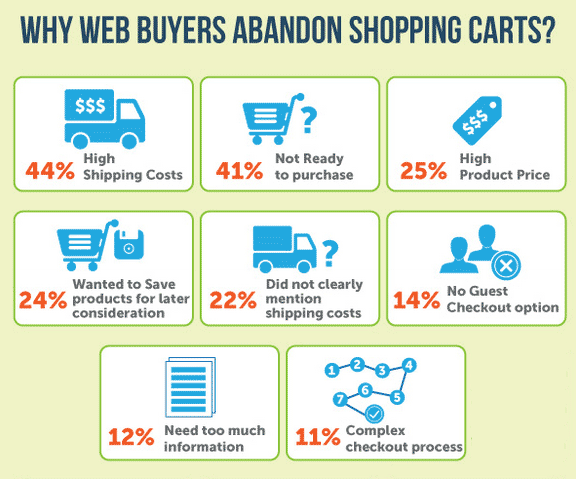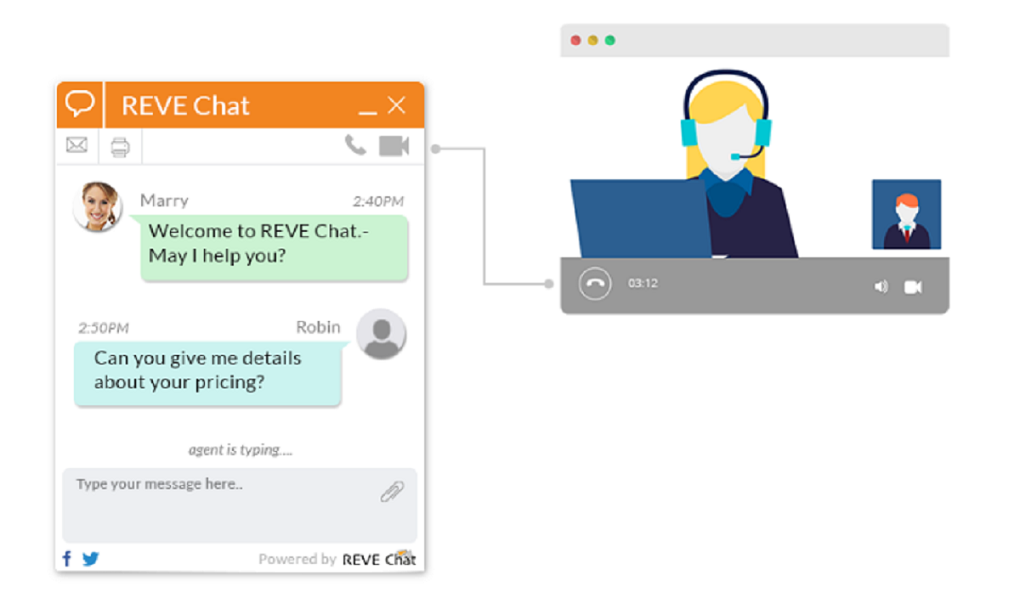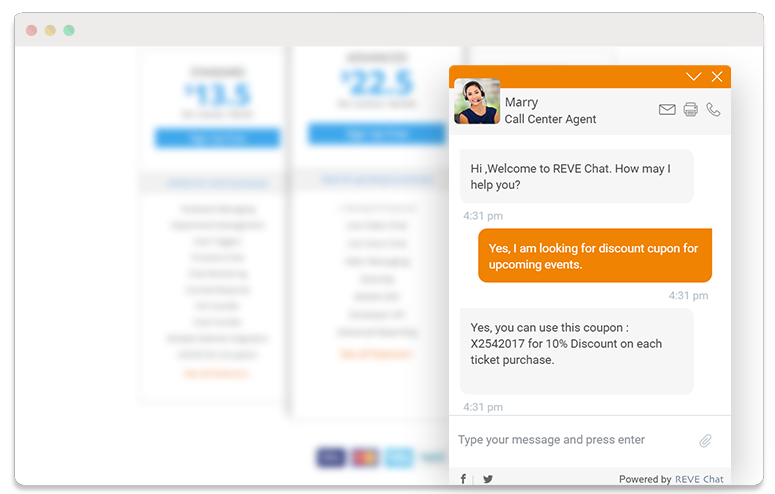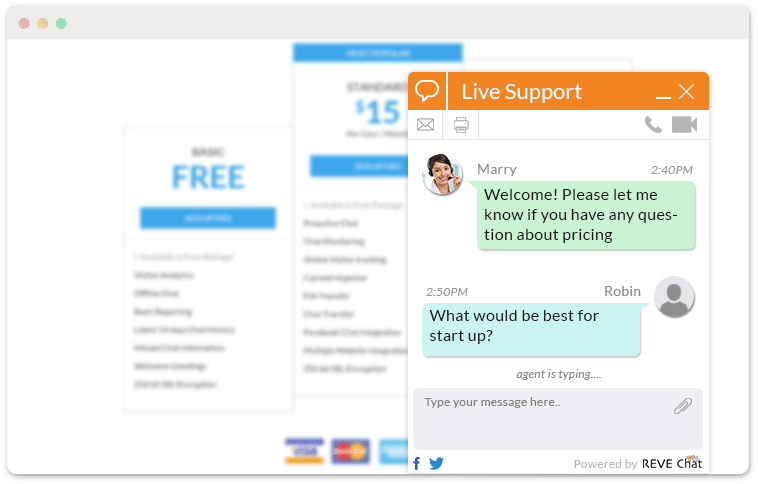Most businesses face the common challenge of ‘not able to engage customers’ when they want, which is why consumers leave. Furthermore, there is less chance to re-engage customers once they leave. Companies with a high-level customer engagement mindset drive revenue 4-8% higher than the rest of their industries.
Proactive chat triggers are a great way to engage with your visitors based on their behavior during the onsite journey. Chat triggers are mostly helpful in assisting customers be it awareness, acquisition, and retention.
Proactive live chat messages are a key to boost conversions along with building strong customer relationships. It also helps in improving customer lifetime value that can benefit your business benefits from more customer referrals and reduced operating costs.
What are proactive chat triggers?
Proactive chat triggers are defined as automated messages that are triggered based on visitor behavior or attributes to engage in contextual conversations. Chat triggers allow you to reach the visitors in the right context, at the right moment to solve their problem and encourage prospects to make more purchases.
Proactive live chat invitations based on rules can efficiently target the customers, leading to higher customer satisfaction and attaining business goals. With the help of proactive chat, you can show your customers that you care for them and goes a long way in improving their experience.
Key benefits of proactive chat triggers
Compared to other live chat features, proactive chat with well-placed triggers helps to connect with the visitors instantly and encourage them to start the conversation. It acts as a bridge between the business & visitors and reduces the communication gap. This increases customer satisfaction and happy clients keep returning to your business.
Some key benefits of using the chat triggers effectively are:
Improve customer engagement rate
Proactive chat triggers act like a great customer engagement tool by allowing businesses to engage customers at the right time, at the right place. With automatic live chat pop up, you can engage with the customers when they need it most. It improves their overall customer experience.
Higher sales conversion
By sending personalized triggers at the right time, you can encourage them to spend more time on the website, which means more chances to convert. Personalized messaging can improve customer conversion rates on websites by up to 40%. Proactive engagement is vital when visitors spend a specific amount of time on a particular page. It helps them to make quick sales decisions.
Reduce cart abandonment rate
Poor website experience and complicated checkout process are the most common reasons for cart abandonment. With the effective use of chat triggers, you can proactively connect with customers and start conversations with them. Eventually, you can guide them in their buying process and reduce the cart abandonment rate.
How to choose the right proactive chat trigger?
Prospects land on your website for many reasons: to learn more about you, ask questions, get pricing, and make an informed decision. In order to engage with visitors effectively, you need to use the right type of triggers across their journey. You need to identify who your target visitors are, their attributes, data points to use the right chat message.
Based on the nature of the business, every marketing team will have its own criteria to determine which triggers will work best for them.
Here are the different types of proactive live chat triggers to implement:
- Agent status: The trigger is fired based on whether the agent is online, offline, or any of these two.
- Visitor type: The trigger can be used based on whether the visitor is new or repeated.
- Number of visits to the site: The trigger condition applies based on how many times a visitor has visited the site.
- Pages viewed in this visit: Based on how many pages the visitor has visited in this site (in the current session), the trigger can be used.
- Visitor device type: The trigger condition applies based on whether the visitor comes from a desktop or smartphone.
- Time-based – The actions are time-dependent and are executed at a specific time. When that specific time passes, the workflow rule re-evaluates the record to make sure that it still meets the rule criteria.
- URL based – You can personalize triggers based on the pages that are mostly visited by your visitors and customers.
- Referral based – If a visitor is coming to you via some other websites, you can set triggers accordingly.
- Demography based – You can create messages based on the geographical location of your visitors.
Proactive chat triggers use cases
The fundamental rule of proactive chat triggers is to use them at the right time, to the right person. The usage of triggers can differ based on the nature of the business and the marketing strategy. However, the core objective of engaging customers efficiently remains the same.
Let us discuss the key use cases for live chat triggers with examples that can help you to optimize your online service and effortlessly engage visitors.
1. Improve sales conversions
One of the core objectives of almost all businesses is to increase the sales conversion rate. Proactive chat triggers are one of the best ways to send personalized messages to prospects who need assistance about the product or price to make final purchase decisions.
According to Forrester Research, “Investment in reactive approach produces a return on investment (ROI) of 15%, while investment in a proactive approach increments ROI by 105%.”
By using the right live chat triggers, you can provide clarity about the next plan of action to the customer such as buying the product or booking a demo.
For example, you can use a call to action (CTA) chat prompt on a specific product page to link to complementary products or upsell other products. Proactive prompts also have the ability to increase the average order value from 10% to 20%.
How proactive chat triggers helps to boost sales?
- Reduce sales cycle –. Chat triggers connect with customers and answer their queries faster and reduce the sales process.
- Convert website visitors into leads – With proactive live chat triggers, you can deliver real time sales assistance and generate more revenue.
- Quick sales decision – When customers receive proactive assistance, it helps in making faster purchase decisions.
2. Prevent cart abandonment
The checkout page is the worst place to lose customers as it indicates that they had decided to make a purchase, but they turned out. ECommerce brands lose $18 billion in sales revenue each year because of cart abandonment.
Offering timely support plays a crucial role in buyers’ decisions. So, do not delay to offer proactive support on the checkout page.
Set proactive chat triggers to identify and respond when a website visitor has items in their shopping cart. For instance, you can set proactive chats right after a buyer is caught on a checkout page or only target people who have been lingering there for some time.
It provides a great opportunity in reducing cart abandonment rates and converting high-value prospects.
3. Greetings
Automated greetings are a great way to start conversations, engage customers, and increase live chat conversion rate. Proactive chat triggers help to develop a connection with the visitors, be it the first time or the returning ones.
For a first time visitor, it is crucial to create a great impression. Keep a note that the first time chat trigger should be supportive and empathetic. You should not sound pushy towards sales.
For example:
- Hey! Good to see you, Can we help you out with anything?
- Hi, Good morning, We are here in case you need help.
Send triggers to the returning visitors who are more important as they indicate a higher level of interest in your business. Greeting repeat visitors lets them know that they didn’t go unnoticed. Surprisingly, chat triggers for the repeat visitors have higher chances to convert.
Some chat message examples for repeat visitors can be:
- Happy to see you again! Is there anything I can help you with?
- Welcome back! It would be a great pleasure to help you again
4. New announcements
A feature without an effective announcement and user onboarding strategy is not a feature at all. It is a waste of time and can bring a layer of complexity to your users. Proactive chat triggers can be a great way for making new announcements.
Chat triggers help to engage your customers by conveying to them the new feature release or the core brand positioning. It helps customers to understand how the feature will benefit them.
Announcing your feature in the right way to the right people, at the right time will convince more of them to try it. The customers who have requested the feature are the perfect group to send the new feature announcement.
The benefits of new announcement with chat triggers are huge:
- Reduce churn by re-engaging users that are evaluating competitors or unsatisfied with existing limitations
- Improve loyalty by proving to your existing users that you are listening to their needs and moving quickly
- Boost retention by getting users hooked on a feature that helps them become more successful
5. Re-engage repeat visitors
The customers you have previously purchased from you are valuable prospects for future sales. Repeat visitors are the ones who know and expressed their interest in your business. When a customer returns to your site, it indicates that he is interested again.
Hence, you should be able to offer quality services to deliver a long-lasting brand experience.
Proactive chat triggers are a great way to re-engage repeat visitors in the following ways:
- Returning visitors give an opportunity to provide personalized and friendly service.
- You can welcome them back and offer some special discounts.
- Triggering messages based on their interests can help you show that they are valuable to you.
The well-crafted proactive triggers, in turn, will make the customer feel more inclined to engage.
Some examples of messages for repeat visitors are:
- Hello XYZ, Hope you are doing good. How may I help you today?
- Hi XXX, If you have made your mind, can we have a tour of the functionality of the new features?
6. Pricing page
The pricing page is the most important strategic place for all businesses. In case a visitor has made it to the pricing section, it means that they are interested in the product and want to know more. It won’t be wise to lose such visitors.
But for pricing related conversations, you need to have a diplomatic approach – neither too pushy nor vague.
What you can do is check on the specific amount of time (say 25 to 30 seconds) they spent on the pricing page, then you can carefully send a proactive chat message.
Here are some examples of proactive chat messages:
- Hello! Do you have any questions about our pricing? We can help you out.
- Are you confused about choosing the right subscription plan for your business?
7. Festive offers
For businesses, festive seasons are the perfect opportunity to increase sales and they keep seeking new marketing strategies to effectively influence a consumer’s decision-making process in their favor.
Proactive chat triggers are an effective way to remind customers what are the festive offers and why they should take hold of it immediately. Chat triggers help businesses to get their workflow ready for the holiday season. For example:
- During Christmas time, you might get a lot of shipping questions. Use triggers to send the queries into a queue for quick processing.
- You can use geographical triggers based on your target audience, to make your holiday campaign successful.
- If it is a Black Friday campaign, you can greet visitors with proactive messages telling them about your discounts.
Some examples of chat triggers are:
- Hello! Are you interested in our special offer? Chat for more information.
- It’s [festive name]! Don’t miss to use our special discounts today.
8. Product features
The main objective behind designing the landing page effectively is to convert as many visitors as possible. Effective use of images, messaging, videos, clear call-to-action (CTA) makes your landing page appealing and improves website engagement.
There is certainly one more element that could possibly help to convert them better.
You can reach out to your visitors proactively and offer assistance via chat triggers. When a customer lingers around a specific product page, it means that there are some doubts or questions.
Triggering a proactive message following the time-based rule can help close a deal faster. With triggers, you can also recommend products and guide them to cross-sell products as well.
Here are some examples of proactive chat triggers:
- Hi! Do you have any questions about our [product name]? I can help you through.
- Hello! Do you know that [Product 2] is a better fit for your business? Chat for more details.
9. Answering support queries
Generally, customers look for answers by going to their respective pages. Many businesses create help center section for support related queries. Identifying the most visited pages and setting up triggers can help customers to get effective solutions.
For example, if a customer lands on the frequently asked questions (FAQ) page, make the best out of the opportunity by sending a proactive live chat invitation to the customer. Chat triggers can be a highly effective engagement strategy while they are browsing the FAQ section.
Here are some examples of chat trigger messages:
- If the solution to your problem is not available, chat with us. Happy to help you.
- No effective solution? Connect with our support team for prompt assistance.
The support content related triggers show that you can resolve the customer query. These triggers provide convenience to the customers and reduce the chances reduce website bounce rate due to unanswered questions.
How to use proactive chat triggers effectively: Best Practices
While proactive chat triggers are hugely successful for customer engagement strategy, there are some tips and best practices to keep in mind while implementing it across different use cases. Implementing proact chat best practices and examples will help you to increase engagement.
Here are the proactive live chat best practices:
- Timing a proactive chat is very crucial as it leads the conversation with relevant suggestions will definitely yield improved customer engagement.
- Personalize your triggers by setting up a friendly tone. You can make your conversations meaningful by using proactive chat triggers based on country, language, intent.
- Offer relevant solutions by identifying if the customer’s query is sales or support related. Your goal should be to meet your customer’s needs by knowing their preferences.
- Set the number of proactive chat wisely to avoid annoying the customer by triggering messages on all the pages.
- Do not overpower the original message of the webpage. If the visitor doesn’t engage, don’t force them to have a conversation.
- Keep human handover ready to take over the conversation, once the visitor engages with the trigger message.
- Deploy a chatbot to automate the trigger messages. A bot is 24×7 active to engage customers thus reducing wait times.
Trigger your success with well crafted proactive chat
Engaging your customers by using proactive chat triggers is indeed a great way to boost your online customer experience. In order to make chat triggers work best for you, you need to learn your customer behavior and gain insights into their intent. Thus, you can connect with customers in a better way and prevent cart abandonment.
Triggers also strengthen customer relationships that cultivate loyalty and provide insights on how to optimize your website. Following the proactive chat best practices, can level up your customer experience game. It will give you an edge over your competitors.
